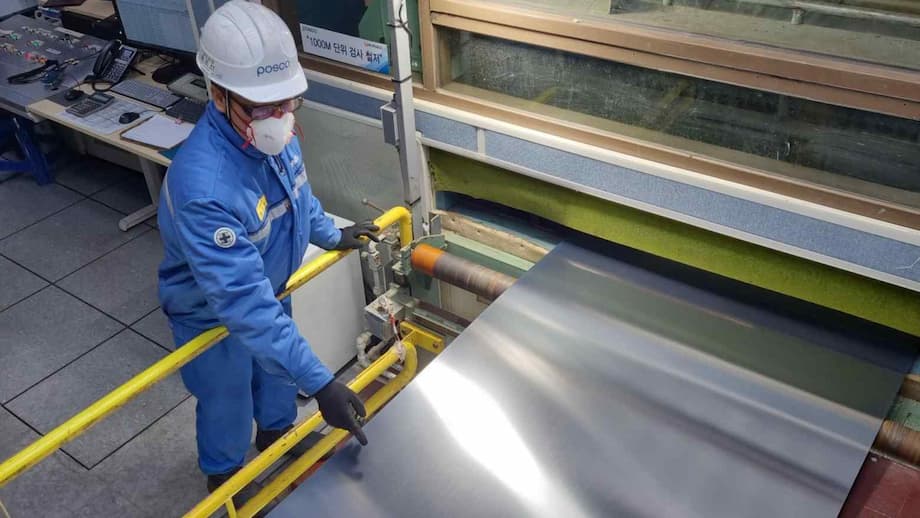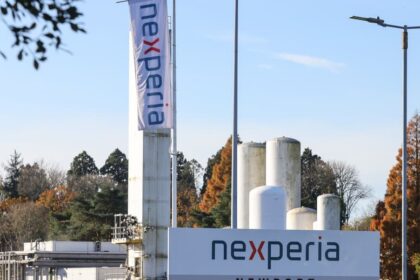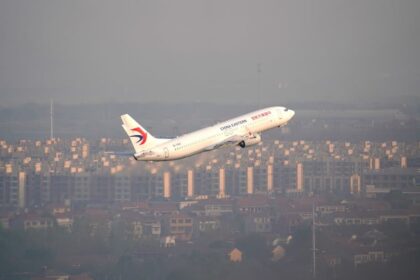South Korea’s Steel Industry at a Crossroads
South Korea, long regarded as a powerhouse in the global steel industry, is facing an unprecedented confluence of challenges. Once celebrated for its robust exports and technological prowess, the nation’s steel sector now finds itself squeezed by weak domestic demand, a surge of cheap Chinese imports, and a barrage of US tariffs that threaten its competitiveness on the world stage. As the world’s sixth-largest steel producer, South Korea’s predicament is emblematic of the shifting dynamics in global trade and manufacturing.
What’s Behind the Triple Threat?
The current crisis is rooted in three interlocking pressures:
- Weak Domestic Demand: South Korea’s construction and manufacturing sectors, traditionally heavy consumers of steel, have slowed amid broader economic uncertainty. This has left steelmakers like POSCO and Hyundai Steel with excess capacity and shrinking profit margins.
- Flood of Cheap Chinese Steel: China, which produces more steel than the rest of the world combined, has ramped up exports as its own economy cools and domestic construction slows. South Korean manufacturers now face a deluge of low-cost Chinese steel, making it harder to compete both at home and abroad.
- US Tariffs and Trade Barriers: The United States, once a major market for South Korean steel, has imposed a series of escalating tariffs. These measures, designed to protect American industry, have made it increasingly difficult for Korean steelmakers to maintain their foothold in the lucrative US market.
These factors have converged to create a perfect storm, forcing South Korean steelmakers to rethink their strategies and seek new avenues for growth.
How US Tariffs Reshaped the Landscape
US trade policy has been a moving target over the past decade. In 2018, President Trump imposed a 25% tariff on steel imports and a 10% tariff on aluminum, citing national security concerns under Section 232 of the Trade Expansion Act. While some countries, including South Korea, initially negotiated exemptions or quotas, these arrangements have since unraveled.
In early 2025, the Trump administration announced a sweeping expansion of tariffs, eliminating most country exemptions and raising the aluminum tariff to 25%. By June, the US doubled down, declaring a 50% tariff on steel and aluminum imports, including hundreds of derivative products. This move sent shockwaves through global markets and hit South Korean steelmakers especially hard.
According to the New York Times, South Korea is the fourth-largest exporter of steel to the US, behind Canada, Mexico, and Brazil. The new tariffs, effective from March and June 2025, have made Korean steel significantly more expensive for American buyers, eroding market share and profits.
Chinese Steel: Overcapacity and Global Fallout
China’s role in the steel saga is both direct and indirect. While Chinese steel exports to the US are limited due to existing tariffs and trade restrictions, China’s vast overcapacity has global repercussions. As domestic demand falters—driven by a real estate slump and slowing construction—Chinese mills have ramped up exports, flooding markets in Asia, Europe, and beyond with cheap steel.
This glut has depressed global steel prices, making it harder for competitors like South Korea to maintain profitability. Chinese steel is not only cheaper but also increasingly high-quality, thanks to technological advancements and efficient supply chains. South Korean manufacturers, who rely on steel for shipbuilding, automotive, and electronics, now face tough choices: pay more for domestic steel or risk relying on imports that could be subject to future trade barriers.
Is Dumping the Real Issue?
South Korea’s Ministry of Economy and Finance has announced the creation of an anti-dumping team to investigate unfair trade practices, particularly from China. However, industry experts and analysts argue that the main challenge is not dumping—selling below cost—but rather the sheer scale and efficiency of Chinese production. As Global Times notes, there is little evidence of dumping by China in the South Korean market. Instead, the competitive pricing is a result of China’s advanced industrial chain and economies of scale.
Efforts to impose anti-dumping duties could backfire, raising costs for South Korean industries that depend on affordable steel, such as shipbuilding and automotive manufacturing. The real solution, experts say, lies in innovation, investment, and finding new markets—not protectionism.
Economic Impact: Exports, Markets, and Industry Response
The economic fallout from US tariffs and Chinese competition is already visible in South Korea’s trade data and financial markets. According to Reuters, South Korea’s export growth slowed in August 2025, with US-bound shipments falling 2.7% year-on-year. While overall exports rose 3%, this was the weakest gain in months, reflecting the drag from higher US tariffs.
Shares of major steelmakers like POSCO and Hyundai Steel have tumbled, with declines of 3% and more reported after tariff announcements. The uncertainty surrounding US trade policy has further rattled investors, as frequent shifts in tariff rates make long-term planning difficult.
Despite the headwinds, South Korean steel shipments to the US actually rose 12% in April 2025 compared to the previous year, as exporters rushed to beat the implementation of new tariffs. However, this frontloading is unlikely to be sustainable, and industry executives warn of mounting burdens if US prices do not rise to offset the higher costs.
Strategic Shifts: Overseas Investment and Diversification
In response to these challenges, South Korean steelmakers are investing overseas and seeking to diversify their markets. Hyundai Steel announced a $5.8 billion factory in Louisiana, set to open in 2029, with POSCO signing on as an equity partner. These moves are designed to circumvent US tariffs by producing steel locally, but the benefits will not materialize for several years.
At the same time, South Korea is exploring new export markets in Southeast Asia, the Middle East, and Europe. However, even these regions are tightening trade barriers. The UK, for example, recently imposed stricter quotas on steel imports from South Korea, Vietnam, and Algeria, with excess volumes subject to a 25% duty. This reflects a broader trend of protectionism as countries seek to shield their domestic industries from global oversupply.
Broader Implications: Global Trade Tensions and Industry Outlook
The South Korean steel crisis is a microcosm of broader global trade tensions. The US, under both Trump and Biden administrations, has used tariffs as a tool to protect domestic industries and address perceived unfair practices by China and others. These measures have sparked retaliatory actions, with countries like China, the EU, and Canada imposing their own tariffs on US goods.
For the steel industry, the result has been a fragmented global market, with higher prices for consumers and manufacturers, supply chain disruptions, and increased uncertainty. US manufacturers, especially in automotive and construction, now face higher input costs, which could erode their competitiveness and fuel inflation.
Meanwhile, the global steel glut shows no signs of abating. China’s overcapacity, driven by years of aggressive investment and a slowing domestic economy, continues to weigh on prices. As more countries erect trade barriers, the risk of a prolonged trade war looms, with negative consequences for growth and stability.
Diplomatic and Policy Responses
South Korea has sought to negotiate exemptions and trade deals with the US, but progress has been slow and complicated by political transitions. President Lee Jae-myung, who took office in June 2025, has emphasized the need for mutually beneficial agreements and industrial cooperation. In a recent statement, Lee said:
This agreement is the outcome of aligning the US interests in revitalizing its manufacturing industry with our determination to expand the competitiveness of our companies in the US market. Through this, we anticipate that industrial cooperation between Korea and the US will be further strengthened, and the Korea-US alliance will become even more solid.
However, many of the existing tariffs remain in place, and the outlook for further relief is uncertain. South Korea’s negotiating position is complicated by its reliance on exports and the need to balance relations with both the US and China.
Industry Voices and Expert Analysis
Industry experts and economists have weighed in on the crisis, offering a range of perspectives. Kathleen Oh, chief Korea economist at Morgan Stanley, described the recent US-South Korea trade deal as “the worst avoided,” noting that while the agreement prevented even harsher tariffs, it did little to address the underlying challenges.
Others, like Chelsea Ye of McCloskey, point to the volatility of US trade policy as a major source of uncertainty. Frequent changes in tariff rates and product coverage make it difficult for companies to plan investments and manage supply chains.
On the policy front, analysts argue that South Korea must focus on innovation, efficiency, and supply chain development to remain competitive. Protectionist measures, such as anti-dumping duties, may offer short-term relief but risk harming downstream industries and raising costs for consumers.
What’s Next for South Korean Steel?
The path forward for South Korea’s steel industry is fraught with challenges but not without opportunities. Key strategies include:
- Investing in Advanced Manufacturing: Upgrading technology and processes to produce higher-value steel products that can compete globally.
- Expanding Overseas Operations: Building factories and joint ventures in key markets to bypass tariffs and secure local demand.
- Diversifying Export Markets: Reducing reliance on the US and China by targeting emerging markets in Southeast Asia, the Middle East, and Africa.
- Strengthening Supply Chains: Collaborating with domestic industries to ensure stable, cost-effective access to raw materials and components.
Ultimately, the industry’s resilience will depend on its ability to adapt to a rapidly changing global environment, marked by protectionism, technological disruption, and shifting patterns of demand.
In Summary
- South Korea’s steel industry faces a triple threat: weak domestic demand, cheap Chinese imports, and escalating US tariffs.
- US tariffs have risen to as high as 50% on steel and aluminum imports, severely impacting Korean exporters and global trade flows.
- China’s steel overcapacity is flooding global markets, depressing prices and intensifying competition for South Korean producers.
- Financial markets have reacted sharply, with shares of major Korean steelmakers falling and export growth slowing.
- South Korean steelmakers are investing overseas and seeking new markets, but face rising protectionism in Europe and elsewhere.
- Experts urge a focus on innovation, efficiency, and supply chain development rather than protectionist measures.
- The future of South Korea’s steel industry will hinge on its ability to adapt to global trade shifts and technological change.












